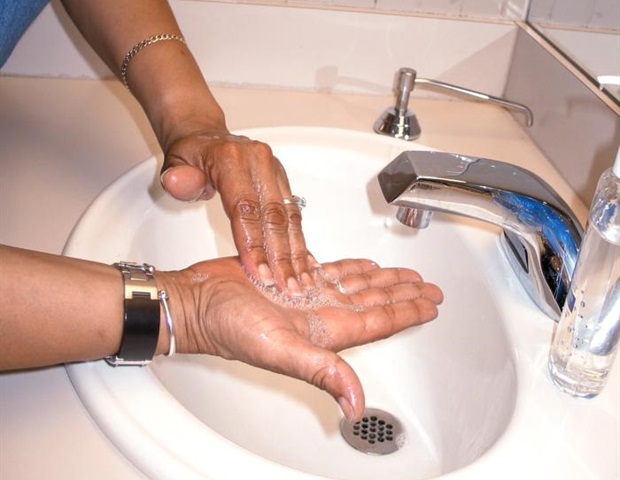In a recent study published in the Journal of Clinical Investigation, researchers determined the T cell response to NVX-CoV2373, an adjuvanted recombinant full-length severe acute respiratory syndrome coronavirus 2 (SARS-CoV-2) spike (S) trimer protein vaccine.
Background
T cells capable of recognizing SARS-CoV-2 epitopes in uninfected individuals are cross-reactive memory T cells generated in response to infections with commonly circulating human coronaviruses (HCoVs) (e.g., OC43, HKU1). Since these cross-reactive memory clusters of differentiation (CD)4+ T cells might impact response to coronavirus disease 2019 (COVID-19) vaccination, the researchers measured CD4+ and CD8+ T cell responses to the NVX-CoV2373 vaccine.
NVX-CoV2373 has emergency use authorization (EUA) in multiple countries. Also, it has demonstrated efficacy in phase IIb and III clinical trials in the United Kingdom (UK), South Africa, the United States (US), and Mexico. It is a recombinant protein vaccine that forms approximately 30-nm nanoparticles based on hydrophobic interaction with a core polysorbate-80 micelle. The NVX-CoV2373 antigen is formulated with Matrix-M adjuvant and uses stabilized prefusion S protein homotrimer of the ancestral Wuhan-Hu-1 strain of SARS-CoV-2. Since this vaccine is stable between 2°C to 8°C, it could be stored and transported to countries with limited refrigeration infrastructure, increasing vaccine access for their populations.
Amid the emergence of new SARS-CoV-2 variants with more infectivity, a more detailed understanding of the immune response to NVX-CoV2373 could aid the ongoing efforts to combat COVID-19.
About the study
In the present study, researchers collected peripheral blood mononuclear cells (PBMCs) from people who received 5 μg NVX-CoV2373 during phase I/IIa clinical trials in Australia and the US. The phase I arm enrolled individuals aged 18 to 59 years, with the addition of a 60- to 84-year-old stratum in phase II. Specifically, five volunteers were vaccinated with 5 μg of NVX-CoV2373 on day zero and a placebo on day 21. The team isolated four placebo recipients on days zero, seven, and 28. They included samples of only five volunteers collected on days 0 and 7, who received the placebo dose on day 21 in a blinded fashion. The researchers measured SARS-CoV-2 S–specific CD4+ T cells by activation-induced marker (AIM) assay.
Further, they deployed intracellular cytokine staining (ICS) to identify S-specific circulating follicular helper T (cTfh) cells, which helped them assess the functionality of NVX-CoV2373–induced S-specific CD4+ T cell responses (e.g., cytokine production). Furthermore, the researchers examined the relationship between T cell and antibody responses following NVX-CoV2373 vaccination. They estimated the IgG titers via an enzyme-linked immunosorbent assay (ELISA) and SARS-CoV-2 neutralization activity. Finally, the team used microneutralization and human angiotensin-converting enzyme 2 (hACE2) binding inhibition assays to analyze anti-S antibody titers.
Study findings
Vaccination with NVX-CoV2373 induced a SARS-CoV-2 S–specific CD4+ T cell response as early as seven days after the first vaccination, as measured by AIM assay. This rapid induction of robust T cell responses could be due to increased immunogenicity from the Matrix-M adjuvant in the NVX-CoV2373 vaccine. This adjuvant may be more potent than most adjuvants at inducing CD8+ T cell priming or recalling cross-reactive memory T cells. It has amphiphilic saponins that destabilize the endosomal/lysosomal membrane and facilitate the entry of vaccine antigens into the cytoplasm. This is the first crucial step in cytosolic catabolism and subsequent presentation of major histocompatibility class I (MHC class I) molecules to initiate CD8+ T cell responses.
A substantial cTfh population characterized these T cell responses. A strong, rapid, and sustained cTfh cell response seven days after the first vaccination likely supports the idea of a more effective antibody response. However, the authors did not observe a surge in the scale of the T cell response between the first- and second-vaccination time points. Likewise, these cells had polyfunctional cytokine-producing cells dominated by those producing interferon-gamma (IFN-γ), tumor necrosis factor-alpha (TNF-α), and interleukin 2 (IL-2). Notably, a subset of donors also displayed NVX-CoV2373-triggered CD8+ T cell responses.
The authors noted that while CD4+ and CD8+ T cell responses correlated with each other after the first and second rounds of vaccinations, tota; AIM+ detected CD4+ T cells correlated with neutralizing antibody titers. Furthermore, the cytokine data indicated that the NVX-CoV2373 vaccine induced a T helper 1 (Th1) CD4+ T cell response, as reported earlier in other studies. Previous animal model-based studies have reported similar Th1 bias in the presence of Matrix-M adjuvanted vaccines. The cytokine responses increased after the second vaccination, with the increase in polyfunctionality persisting after the second dose, specifying more polarization of the CD4+ T cell response.
Conclusions
Protein subunit vaccines have been poor inducers of CD8+ T cell responses in humans. However, the study data demonstrated that the NVX-CoV2373 vaccine induced modest SARS-CoV-2 S-specific CD8+ T cell responses in a subset of participants. ICS results fetched similar results, with IFN-γ+ CD8+ T cells detected after two rounds of the NVX-CoV2373 vaccination.
Although less polyfunctional, several donors developed multifunctional CD8+ T cell responses following NVX-CoV2373 vaccination. As S-specific CD8+ T cell responses correlated with CD4+ T cell responses, the observed CD8+ T cell response likely depended on the CD4+ T cell response. Further studies with larger cohorts of seropositive and seronegative vaccinees are warranted to validate the study findings.
Journal reference:
- Carolyn Rydyznski Moderbacher, Christina Kim, Jose Mateus, Joyce Plested, Mingzhu Zhu, Shane Cloney-Clark, Daniela Weiskopf, Alessandro Sette, Louis Fries, Gregory Glenn, Shane Crotty. (2022). NVX-CoV2373 vaccination induces functional SARS-CoV-2–specific CD4+ and CD8+ T cell responses.The Journal of Clinical Investigation. doi: https://doi.org/10.1172/JCI160898 https://www.jci.org/articles/view/160898







